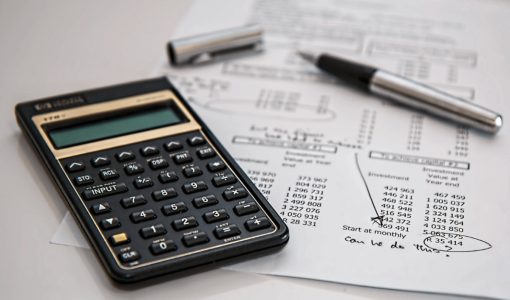Say Goodbye to Money Woes: Aussie Expert Reveals Proven Budgeting Technique for Financial Stability
- Replies 3
As we age, it becomes increasingly important to have a solid financial plan in place. With retirement on the horizon, it's crucial to have a budget that not only covers our basic needs but also allows us to live comfortably and enjoy the fruits of our hard work.
We know budgeting can seem overwhelming, but with a few simple tips and tricks, it can become a stress-free process.
Whether you're a seasoned saver or just starting to plan for your financial future, these money budgeting tips will help you get on track and stay there.
And it's lucky for us that Aussie money guru Tea Angelos is here to share with us her solution: she calls it the 'only money routine you need to follow'.
In a recent video uploaded on TikTok, the founder and CEO of Smart Women Society and the author of an upcoming finance book walks us through an easy-to-understand and achievable money routine that can be followed daily, weekly, monthly and yearly.
This is something that Tea's been teaching for many years through Smart Women Society and she formed the routine after seeing that many of her friends and colleagues needed help getting on top of their finances.
Tea explains that the first and most important step is to take stock of your income and expenses: work out how much you have coming and going every month.
To help with this, Tea suggests printing out copies of your previous few months' bank statements and tracking your daily spending, which will give you direct accountability and help form a budget.
From there, your daily tasks should include budget checking, tracking spending and having a look at your balance; weekly tasks should focus on checking back in and planning your meals.
Monthly tasks include setting up automatic payments for bills and cutting back on unnecessary spending, while yearly tasks should include reviewing insurance policies and calling your bill providers for better rates.
A lot of you may be shuddering at the thought of having to do all this (which, we agree, is perfectly reasonable), but it's important to remember that a budget plan doesn't mean that you have to limit yourself – it just means you have to be a little more mindful with your spending.

Creating a budget is an essential part of financial planning and management, which can help you in identifying your income and expenses. When it comes to making a budget that will hold up over time, many people rely on tried-and-true methods.
Here are some of the most popular techniques to get started:

The 50/30/20 technique
The 50/30/20 budgeting technique is a simple and effective way to manage your finances.
It's based on the principle that you should allocate 50% of your income towards necessities, such as housing, food, transportation, and insurance. 30% should be set aside for lifestyle choices, such as dining out, entertainment, and hobbies. Finally, 20% should be dedicated to savings and debt repayment.
The idea behind the 50/30/20 budget is to prioritise the necessities, enjoy life's pleasures in moderation, and maintain a healthy financial future by saving and paying down debt. This method provides a clear structure for managing your money and can help you achieve your financial goals over time.
Cash envelope system
The cash envelope system is a budgeting technique that involves physically dividing your spending money into separate envelopes for specific categories of expenses, such as groceries, entertainment, and transportation.
The idea is that you only use the cash in each envelope for its designated category and once the cash is gone, you stop spending in that category for the rest of the month. This helps to limit overspending and stick to your budget.
By using cash instead of a debit or credit card, you can also get a more tangible sense of how much you're spending and better control your spending habits.

Zero-based budget
The zero-based budgeting technique is a budgeting method in which your income minus your expenses equals zero.
In other words, every dollar you earn is allocated to either an expense or a savings category, so you're left with zero dollars unassigned at the end of each month. This type of budgeting is designed to ensure that every dollar you earn has a specific purpose, and helps to eliminate overspending.
To create a zero-based budget, you start by listing all of your income for the month, and then subtract all of your expenses, including your fixed expenses, variable expenses, and savings.
The goal is to ensure that at the end of each month, your expenses are equal to your income, leaving you with a balance of zero. This budgeting technique can be a useful tool for people who want to gain control over their finances and make the most of their income.
Debt avalanche
The debt avalanche method is a debt repayment strategy that prioritises paying off debts with the highest interest rates first, while still making the minimum payments on all other debts.
This approach is designed to save money in interest over time by attacking the most costly debt first.
To use this method, list all of your debts in order of interest rate, with the debt with the highest interest rate first. Then, focus on paying as much as you can on the highest-interest debt while still making the minimum payments on the others.
Once the highest-interest debt is paid off, move on to the next highest-interest debt and so on. By using the debt avalanche method, you can save money in interest and pay off your debts more quickly, leading to a healthier financial future.

Money woes got you feeling down? Don't worry, the right budgeting technique can help you get in control of your finances and finally reach those goals.
With so many options to choose from, it can be overwhelming to decide which method is right for you - so make sure you take your time and consider the best budgeting technique so you can find the perfect fit for your lifestyle.
Please also note that, while we do our best, we’re not financial experts and nothing in this article should be construed as financial advice.
Don't forget to share your budgeting tips and tricks in the comments. We're all in this together, so let's help each other out and make the most of our hard-earned money!
Members, how do you manage your budget? Do you have a routine or method in mind?
We know budgeting can seem overwhelming, but with a few simple tips and tricks, it can become a stress-free process.
Whether you're a seasoned saver or just starting to plan for your financial future, these money budgeting tips will help you get on track and stay there.
And it's lucky for us that Aussie money guru Tea Angelos is here to share with us her solution: she calls it the 'only money routine you need to follow'.
In a recent video uploaded on TikTok, the founder and CEO of Smart Women Society and the author of an upcoming finance book walks us through an easy-to-understand and achievable money routine that can be followed daily, weekly, monthly and yearly.
This is something that Tea's been teaching for many years through Smart Women Society and she formed the routine after seeing that many of her friends and colleagues needed help getting on top of their finances.
Tea explains that the first and most important step is to take stock of your income and expenses: work out how much you have coming and going every month.
To help with this, Tea suggests printing out copies of your previous few months' bank statements and tracking your daily spending, which will give you direct accountability and help form a budget.
From there, your daily tasks should include budget checking, tracking spending and having a look at your balance; weekly tasks should focus on checking back in and planning your meals.
Monthly tasks include setting up automatic payments for bills and cutting back on unnecessary spending, while yearly tasks should include reviewing insurance policies and calling your bill providers for better rates.
A lot of you may be shuddering at the thought of having to do all this (which, we agree, is perfectly reasonable), but it's important to remember that a budget plan doesn't mean that you have to limit yourself – it just means you have to be a little more mindful with your spending.
Key Takeaways
- Téa Angelos has a simple method for managing money with a budgeting routine.
- The routine is broken down into daily, weekly, monthly and yearly tasks to ensure control over finances.
- Angelos suggests taking stock, tracking daily spending and creating a budget as the foundations of a financial plan.
Here are some of the most popular techniques to get started:

Many people turn to popular budgeting techniques to create a successful and sustainable budget. Credit: Unsplash/Towfiqu barbhuiya.
The 50/30/20 technique
The 50/30/20 budgeting technique is a simple and effective way to manage your finances.
It's based on the principle that you should allocate 50% of your income towards necessities, such as housing, food, transportation, and insurance. 30% should be set aside for lifestyle choices, such as dining out, entertainment, and hobbies. Finally, 20% should be dedicated to savings and debt repayment.
The idea behind the 50/30/20 budget is to prioritise the necessities, enjoy life's pleasures in moderation, and maintain a healthy financial future by saving and paying down debt. This method provides a clear structure for managing your money and can help you achieve your financial goals over time.
Cash envelope system
The cash envelope system is a budgeting technique that involves physically dividing your spending money into separate envelopes for specific categories of expenses, such as groceries, entertainment, and transportation.
The idea is that you only use the cash in each envelope for its designated category and once the cash is gone, you stop spending in that category for the rest of the month. This helps to limit overspending and stick to your budget.
By using cash instead of a debit or credit card, you can also get a more tangible sense of how much you're spending and better control your spending habits.

Making and sticking to a budget gives people more control over their money and helps them achieve their financial goals. Credit: Unsplash/Towfiqu barbhuiya.
Zero-based budget
The zero-based budgeting technique is a budgeting method in which your income minus your expenses equals zero.
In other words, every dollar you earn is allocated to either an expense or a savings category, so you're left with zero dollars unassigned at the end of each month. This type of budgeting is designed to ensure that every dollar you earn has a specific purpose, and helps to eliminate overspending.
To create a zero-based budget, you start by listing all of your income for the month, and then subtract all of your expenses, including your fixed expenses, variable expenses, and savings.
The goal is to ensure that at the end of each month, your expenses are equal to your income, leaving you with a balance of zero. This budgeting technique can be a useful tool for people who want to gain control over their finances and make the most of their income.
Debt avalanche
The debt avalanche method is a debt repayment strategy that prioritises paying off debts with the highest interest rates first, while still making the minimum payments on all other debts.
This approach is designed to save money in interest over time by attacking the most costly debt first.
To use this method, list all of your debts in order of interest rate, with the debt with the highest interest rate first. Then, focus on paying as much as you can on the highest-interest debt while still making the minimum payments on the others.
Once the highest-interest debt is paid off, move on to the next highest-interest debt and so on. By using the debt avalanche method, you can save money in interest and pay off your debts more quickly, leading to a healthier financial future.

There is no shortage of budgeting methods out there, but it's up to each person to thoroughly consider their alternatives and pick the one that works best for them. Credit: Pexels/maitree rimthong.
Money woes got you feeling down? Don't worry, the right budgeting technique can help you get in control of your finances and finally reach those goals.
With so many options to choose from, it can be overwhelming to decide which method is right for you - so make sure you take your time and consider the best budgeting technique so you can find the perfect fit for your lifestyle.
Please also note that, while we do our best, we’re not financial experts and nothing in this article should be construed as financial advice.
Don't forget to share your budgeting tips and tricks in the comments. We're all in this together, so let's help each other out and make the most of our hard-earned money!
Members, how do you manage your budget? Do you have a routine or method in mind?








